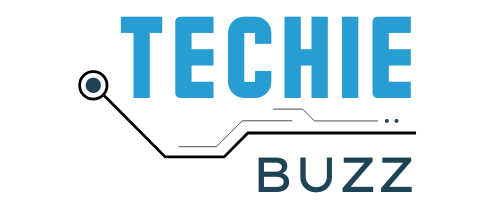Computer security commonly referred to as “cybersecurity,” is the process of preventing hackers from accessing the network (software, hardware, and data). It assists in stopping cyberattacks such as illegal data access, data alteration, and data destruction.
As cybersecurity awareness grows, a lot of new tools and software are released on the market that assists in conducting a privacy audit for all apps in order to eliminate any possible threats. With the use of these technologies, managing file access control and doing forensic analysis are now both simpler than before.
Public Wi-Fi is used for the majority of cyberattacks because it increases the likelihood that your device or sensitive data may be stolen. Utilizing a trustworthy connection like the one provided by HughesNet, which is extraordinarily secure to be trusted with online banking and shopping, is the least you can do to protect yourself from such attacks.
Top 8 Software and Tools for Cybersecurity in 2023
There are several cybersecurity technologies accessible to combat any type of theft due to the wide variety of cyberattacks. We’ve included a few of the greatest cybersecurity products that offer excellent defense against hackers below. Let’s look at it.
1. Wireshark

By examining network protocols, the open-source program Wireshark improves network security. It is a console-based utility that costs nothing. In order to continuously track the network traffic at various stages, Wireshark employs packet sniffing. Among cybersecurity experts, intercepting and examining data packets is a very common way to find any weaknesses.
2. Metasploit
Businesses may do security assessments and data analysis using the free and commercial versions of Metasploit, which can enhance overall security. To find any weaknesses across the whole network system, penetration testing is utilized. The security of many systems, including online applications, computer networks, servers, and much more, is evaluated using this security product, also known as the hacking tool.
3. Cain and Abel

One of the earliest cybersecurity products on the market, Cain and Abel, was initially created to look for security flaws in the Windows operating system. This program may also be used to recover forgotten passwords and record VoIP conversations. In order to decrypt passwords, this penetration testing tool employs network sniffing and brute force assaults. Cain and Abel can evaluate the routing algorithms used by network systems to determine whether data packets are susceptible to hacking in addition to retrieving passwords.
4. Kali Linux
With more than 300 capabilities for server and website security, Kali Linux is one of the most popular penetration testing programs. Kali Linux may be used to swiftly monitor network systems and is appropriate for individuals with varying levels of cybersecurity knowledge. Database protection from numerous online dangers and assaults is made easier by this solution. Offensive Security now supports Kali Linux, which was initially built as BackTrack, a Linux-based distribution tool for penetration testing.
5. Intruder

Among the popular network vulnerability detection tools, Intruder is a top-rated cloud-powered cybersecurity solution that is appropriate for both small and large businesses. Along with a 30-day free trial edition, Intruder is supplied with three paid plans: Essential, Pro, and Verified. This security tool is effective in identifying security gaps in your IT system and preventing data breaches. Thanks to more than 9000 security checks, Intruder may be used to scan your IT system for any application flaws, CMS-related issues, missing updates, and weak encryptions.
6. Mimecast
Mimecast is a well-known cloud-based cybersecurity tool that offers better email security, data protection, online threat intelligence, and web security all on one platform, enhancing cyber resilience. The Mimecast array of security products and services enables many security features, including email security, spam detection, and blocking, cloud archiving, and others. This premium tool should be utilized by small enterprises.
7. Snort

Snort is another piece of free software for identifying and preventing attempted hacks into computer networks. This program is compatible with Centos, FreeBSD, Fedora, and Windows. The intrusion prevention tool “Snort” is capable of recording packets as well as doing real-time network traffic analysis. Small to medium-sized businesses should use Snort, which is compatible with a wide range of hardware configurations and operating systems.
8. Nessus
Over 30,000 multinational firms trust and utilize Nessus, a well-known security tool, to find vulnerabilities in networks and websites. Due to its six sigma standard, Nessus reports the lowest number of false positives per million scans (0.32 faults). Nessus is able to spot vulnerabilities, including those brought on by software bugs, missing security updates, and improper operating system and IT devise configurations. This app offers a free trial version of the utility as well as a professional, paid edition that includes a vulnerability screening tool to check for potential vulnerabilities.
Security Tips for Using Cybersecurity Software

Using this type of tools is an essential step when it comes to keeping your data secure. As cyber attackers become increasingly sophisticated in the techniques used to gain access to personal and business data, cybersecurity software plays an ever-increasing role in data protection. As a result, it is important for users to understand the benefits of using such software and the key steps they should take in order to make sure that their data remains confidential and secure.
For businesses, some of these tips include educating employees on proper use of computer systems, installing up-to-date antivirus programs on all connected devices and periodic updates on network protection measures. In addition, businesses should consider encrypting sensitive files or using two-factor authentication measures wherever possible.
Conclusion
You have read about the top 8 cybersecurity tools in this article, along with some of their key features and benefits. Most of the software comes in a mix of free and paid versions, with some being open-source and free and others being more expensive. You have also gained knowledge of the many types of cybersecurity technologies and how they work, including tools for penetration testing and vulnerability scanning.
